The Russian Woodpecker was so powerful it globally disrupted TV and radio broadcasts, commercial aviation communications, and even utility transmissions. The Woodpecker’s official name is Duga, it is a humongous, over-the-horizon radar that the Soviets utilized to detect nuclear ballistic launches in the US. This power-hungry Duga was located in the shadow of the doomed Chernobyl nuclear power plant in present day Ukraine. During the Soviet days the super-secret Duga was listed as a children’s camp on maps.
Duga, which means arc in Russian, utilized frequencies reserved for civilian communications. The radar made sharp repetitive clicking sounds which earned its nickname the Russian Woodpecker. In western military circles it was known as the Steel Yard. The Soviet Union did not disclose Duga’s existence. It was rumored to be able to manipulate the the weather and to even control minds. The Woodpecker was constructed in 1976, but its existence was not officially confirmed until the fall of the Soviet Union.
Duga is located in the Chernobyl Exclusion Zone in Ukraine. The Exclusion Zone is a 1000 square mile restricted area monitored by the Ukrainian military. Duga is located only 10 km from the highly radioactive Chernobyl reactor which was destroyed in 1986 during a routine test that went horrifically wrong. Chernobyl is considered the worst nuclear disaster in the world, forcing over 100,000 residents to be evacuated. Today, it is possible to take a tour of the Exclusion Zone which includes Duga.
Two weathered, green gates with silver Soviet stars stand sentry upon my arrival. Partially obscured, I caught my first glimpse of Duga towering over the forest. A 20 minute walk brought me to the base of the Duga.
This monstrosity dwarfs the thick green forest. Duga measures 500 feet tall and stretches nearly 3,000 feet long. This mechanical monster weighs in at over 14,000 tons. This radar is a giant metal patterned structure that reaches toward the sky.
Duga was manned by a military staff numbering 1,000 soldiers who were garrisoned in the village of Chernobyl-2. Next to Duga is a large military facility which was used to operate Duga. I explored the abandoned and dilapidated control facility. As I avoid debris, I noticed Soviet imagery and propaganda reminiscent of the cold war. I imagined the ghosts of Soviet soldiers manning the equipment in these dark rooms in the height of the cold war.
After several hours of exploration, I departed in awe of Duga.

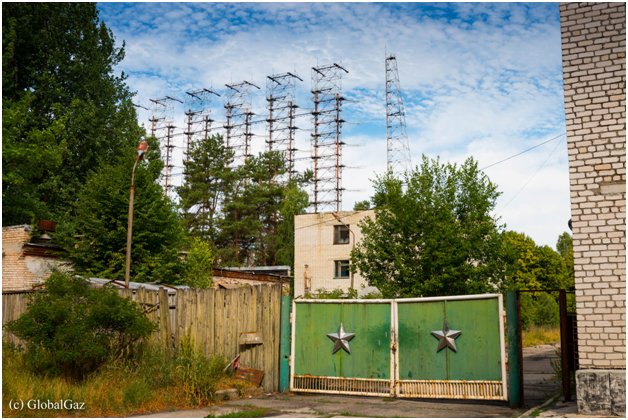
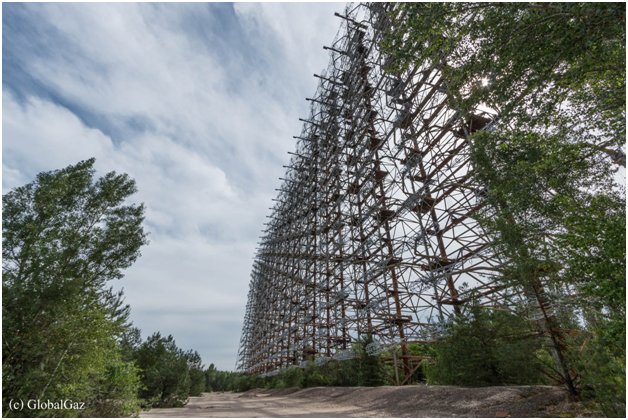
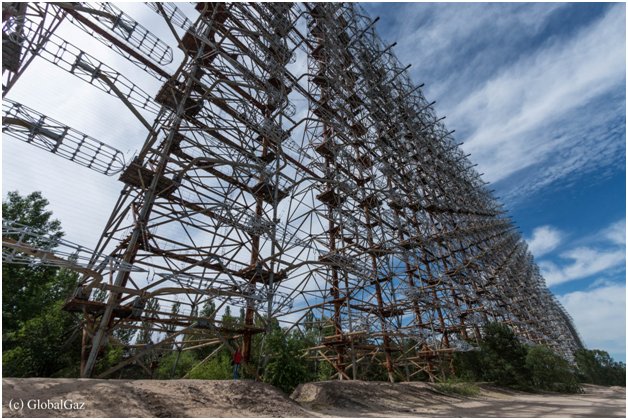
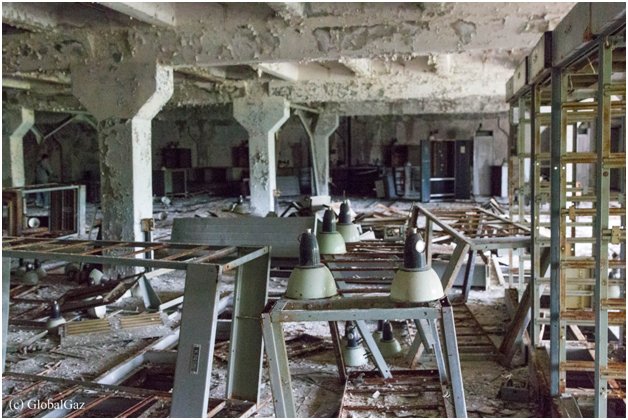
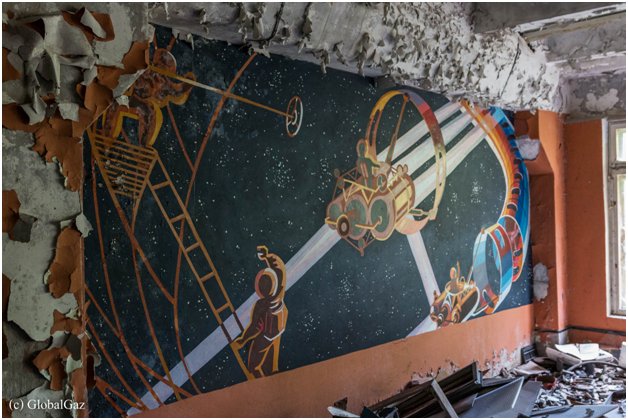







Very good article, Ric. Thanks for the info and pics regarding this awful tragedy.
Ciao,
Mike and Gina
Rome, Italy
Thanks Mike and Gina.
A unique and very memorable place to visit.
Happy New Year.
Ric
Great article and great pictures, too! The Duga is by far one of the most interesting parts of the CEZ, to me at least. I love that that piece of space-themed art has managed to survive all this time – and now it will continue to survive even longer now that you’ve photographed it
Thanks Evan. And of course I agree with you, an amazing structure to gaze at in a forest in the shadow of Chernobyl.